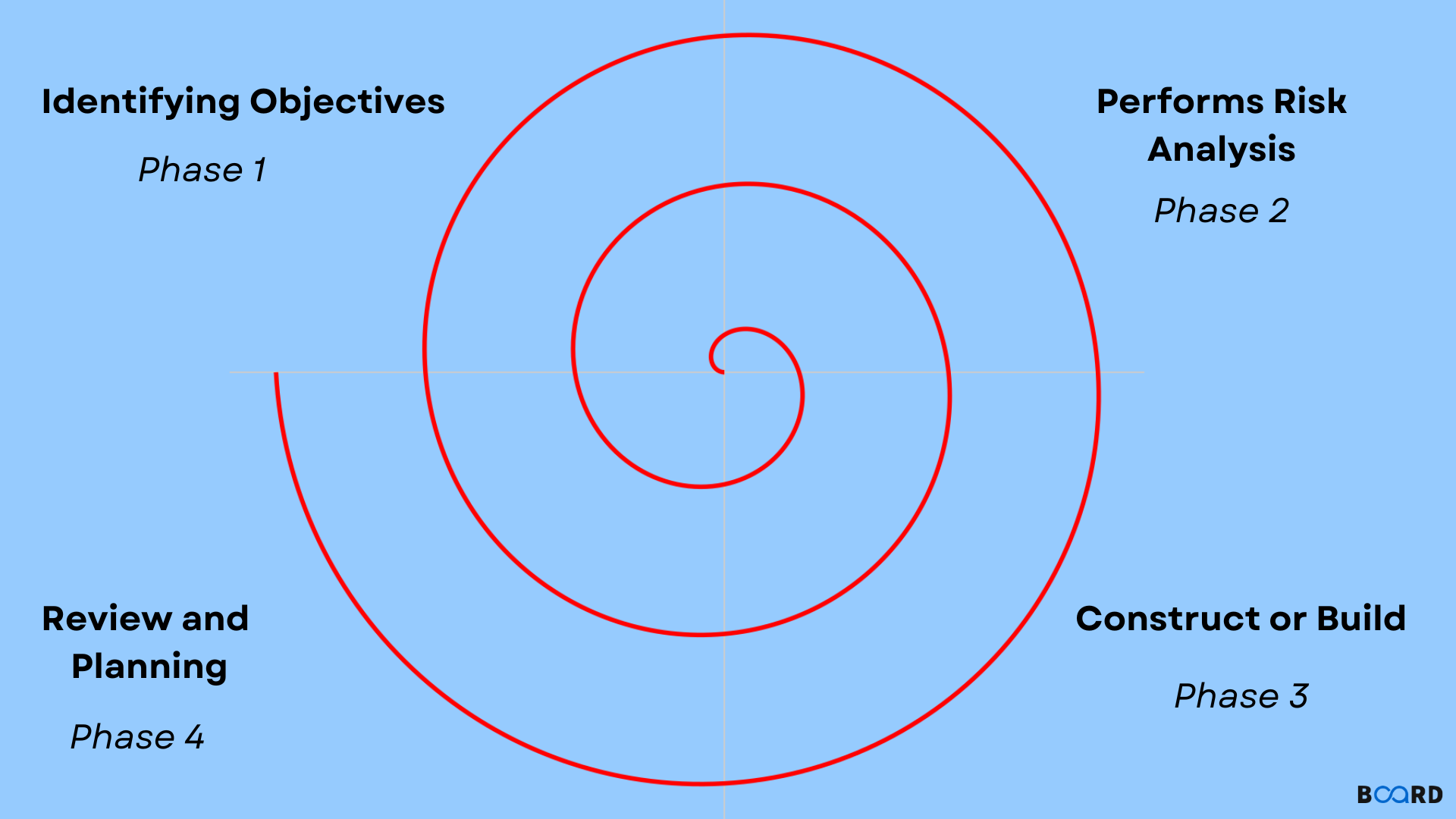Mastering Software Engineering: Diagrams, Models, and Testing Techniques
Spiral Model in Software Engineering

Introduction
In this article, we will discuss the spiral model of software engineering. The spiral model is considered one of the most crucial models among all the software development life cycle models that provide support for risk handling. Its graphical visualization looks like a spiral having many loops. It is difficult to determine the exact number of loops in the spiral as they vary from one project to another. The individual loop of the spiral represents a phase of the software development process. Also, the number of phases required to develop a project relies upon the project risks and is decided by the project manager as well. The project manager plays a vital role in the development of the product as they are responsible for deciding the number of phases.
The different components of the spiral diagram have their own significance. For example, the radius of the spiral signifies the cost of expenses of the project, progress made so far is represented by the angular dimensions.
The following diagram represents the different phases of the spiral model:
The Four Quadrants
The individual phase of the spiral model can be divided into four quadrants. The working of these four quadrants are discussed below:
Identifying objectives and alternative solutions
The very first step is information gathering. This quadrant signifies gathering information from the customers and then objectives are recognized, expanded, and analyzed at the beginning of every phase. After this step, other possible solutions are proposed in this quadrant.
Determine and resolve risks
In this quadrant, all the possible solutions are examined and the best one is picked up. The risks that might arise with the selected solution are identified and finally, the best strategy is chosen to tackle the risk. At the end of the second quadrant, the prototype is constructed for the best possible solution.
Making the next version of the product
In this quadrant, the determined features are developed and undergo testing. After the end of the third quadrant, the next version of the product gets ready.
Final evaluation and next phase planning
In this quadrant, customers test the developer version of the product. After the end of the fourth quadrant, the planning of the next phase gets started.
How to handle risk in the spiral model?
A risk is any problem that may influence the completion of a software project. Handling such issues is the most main motive of the spiral model. One can easily handle such risks by developing a prototype. The spiral model allows us to fight threats by providing us with features to develop a prototype for every phase of software development.
Merits of the spiral model
The merits of the spiral model are the following:
Advantages in big projects:
The spiral model is always an ideal choice in big projects for developers.
Risk handling:
There are cases when many unknown risks might occur during the software development process, in such cases, the Spiral model comes handy as it provides in-depth risk analysis and has risk handling capacity for every phase.
Flexibility in requirement:
Sometimes, we need to incorporate a number of changes in the later phase. Such changes are possible easily using the spiral model.
Customer satisfaction:
The customer has the access to supervise the development of the product.
Demerits of the spiral model
The demerits of the spiral model are the following:
Complexity:
The spiral model is highly complex as compared to other models.
Cost:
The spiral model is costly and hence it is not recommended for small projects.
Time management:
The spiral model contains a large number of phases and therefore time management is difficult.
Conclusion
In this article, we discussed the spiral model of software engineering. I hope this has enhanced your knowledge in the field of software development.
